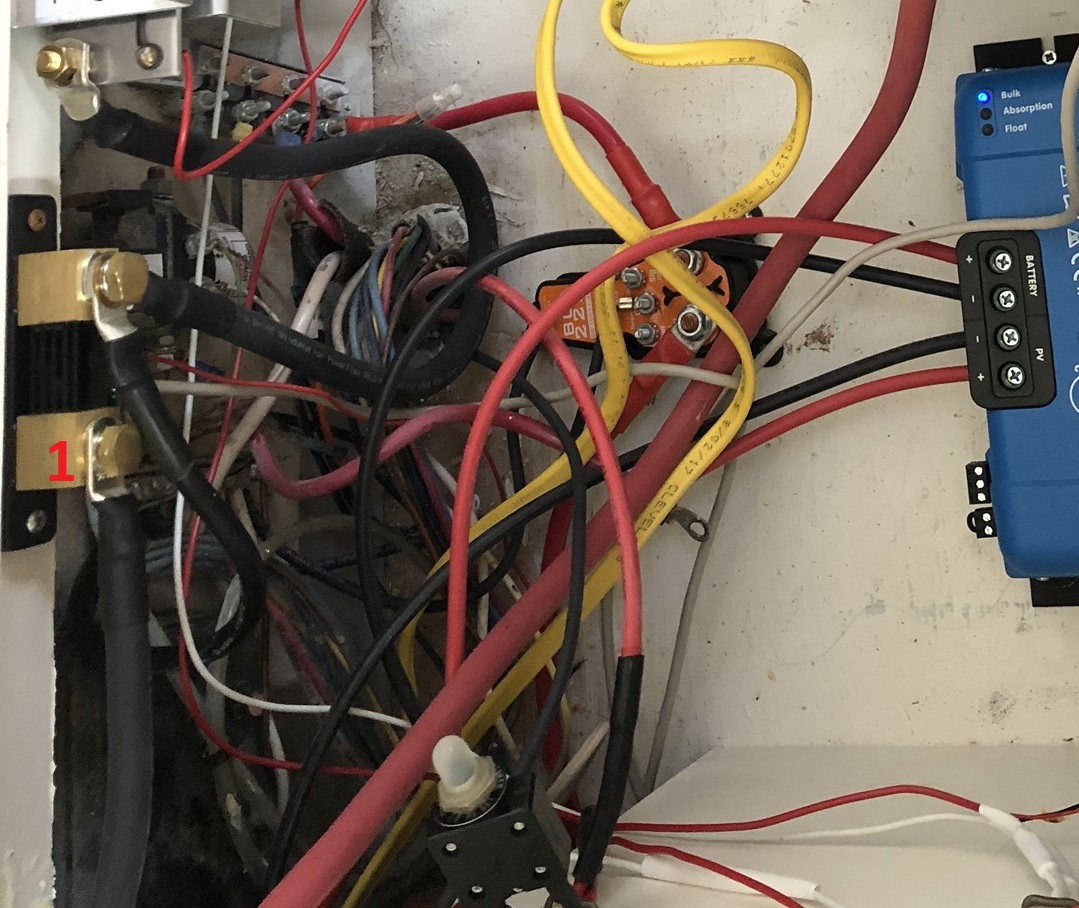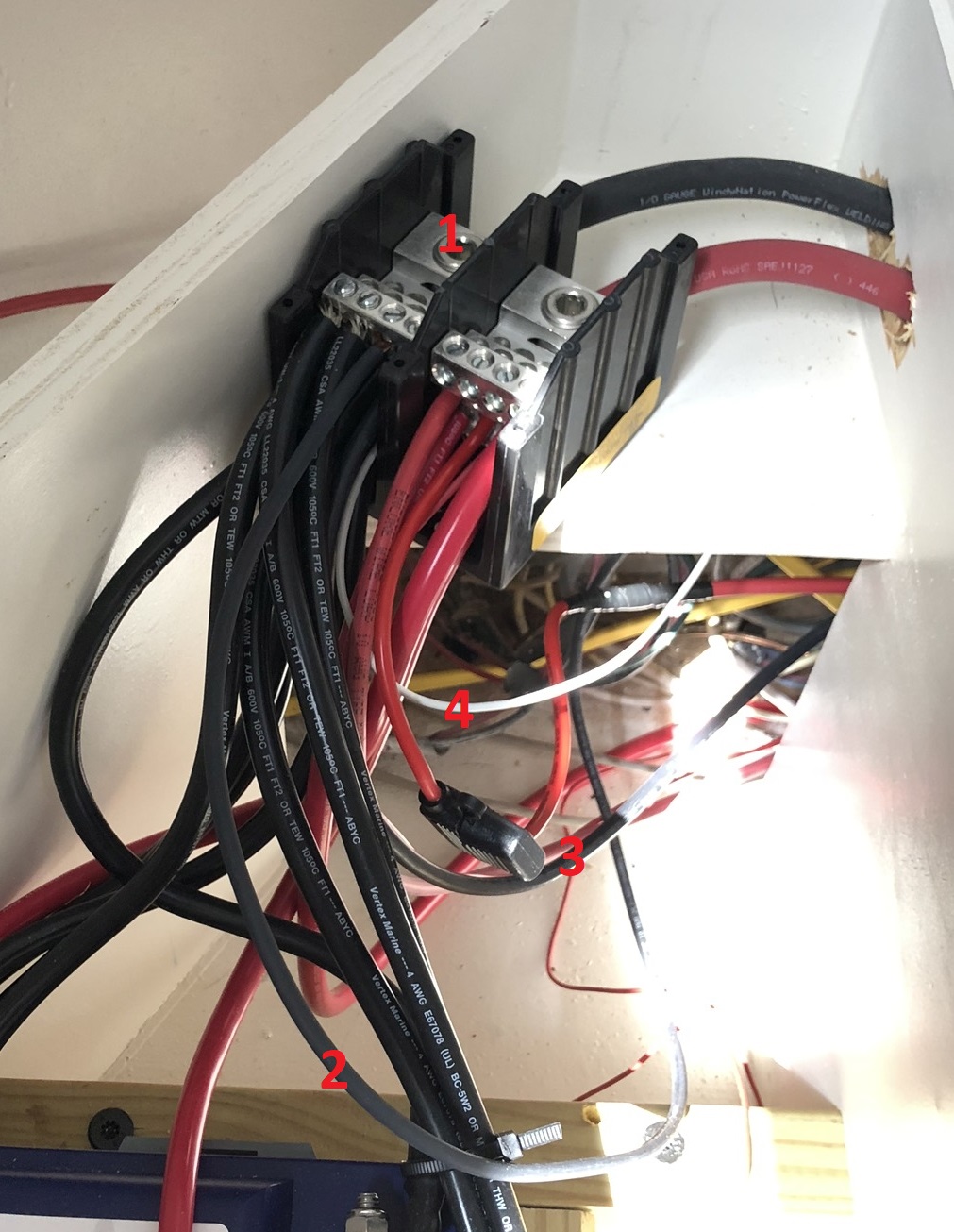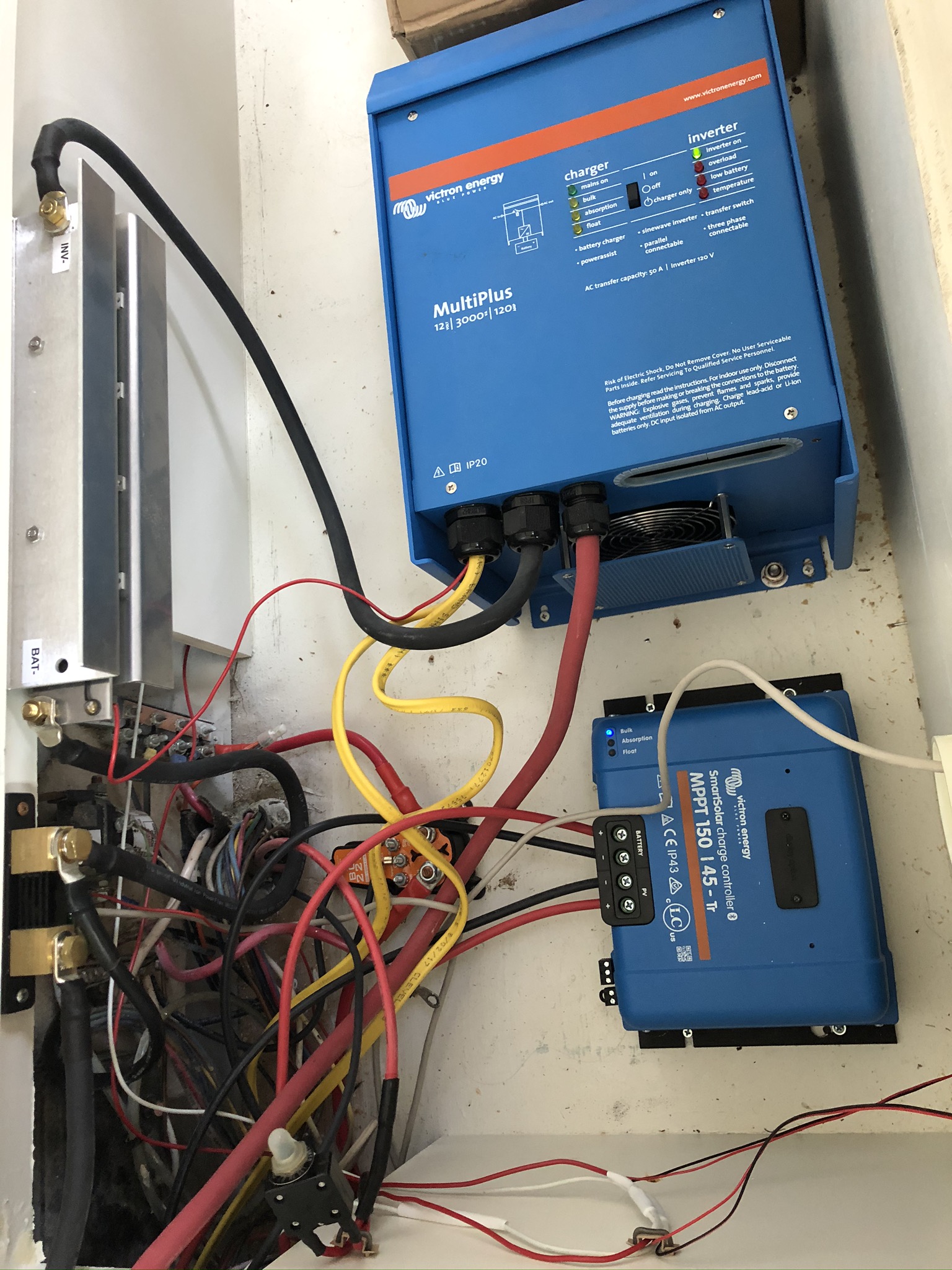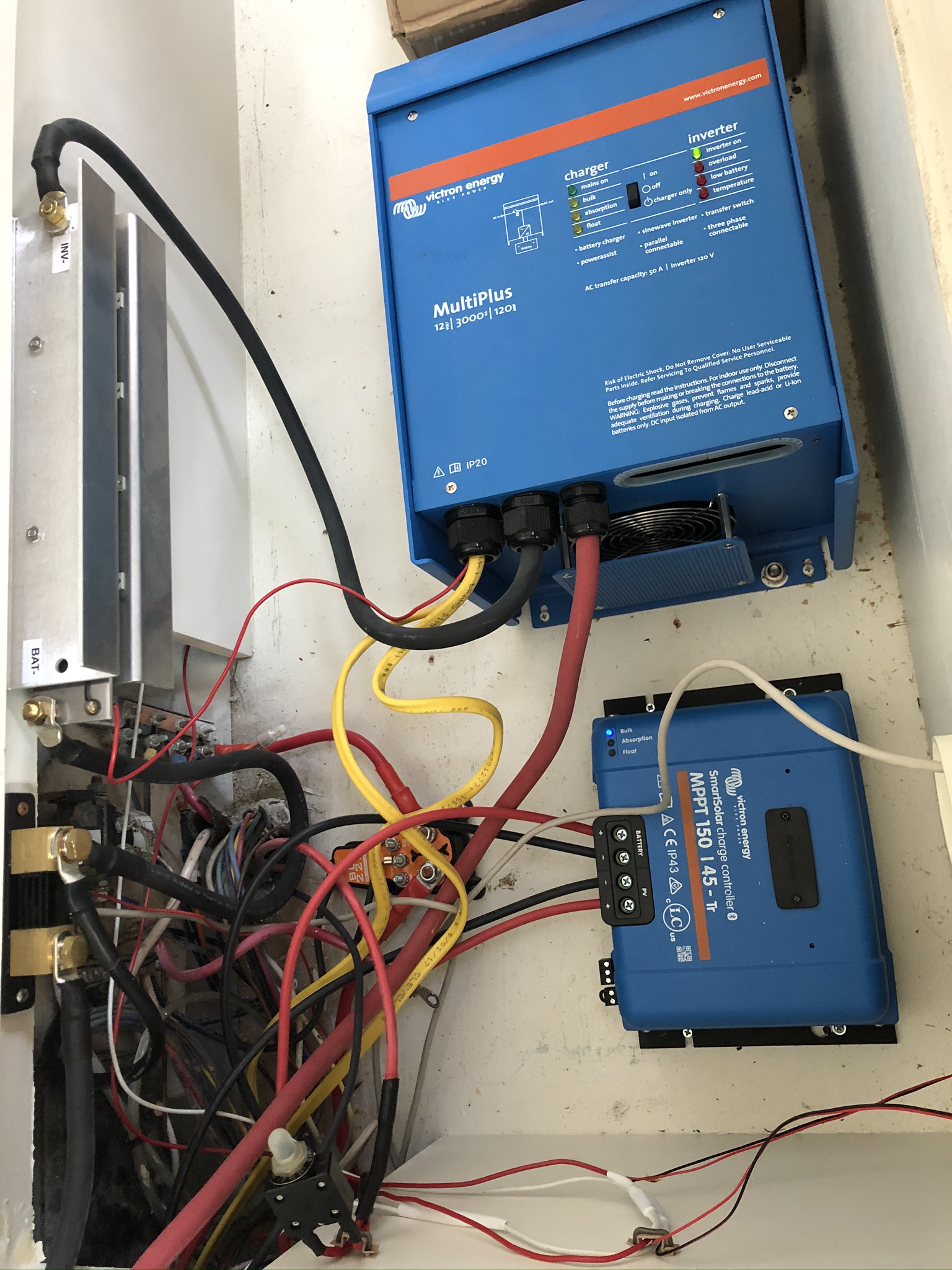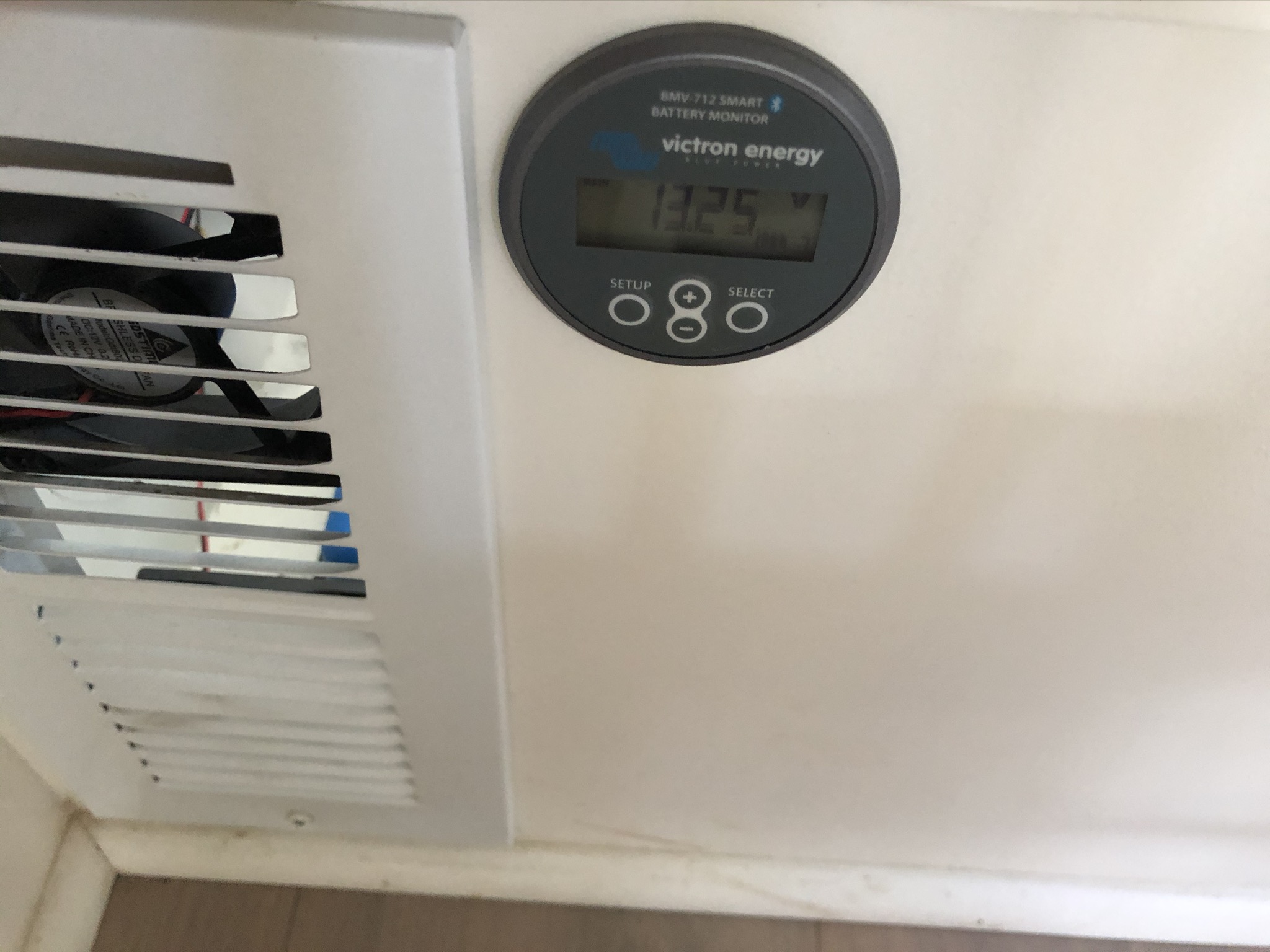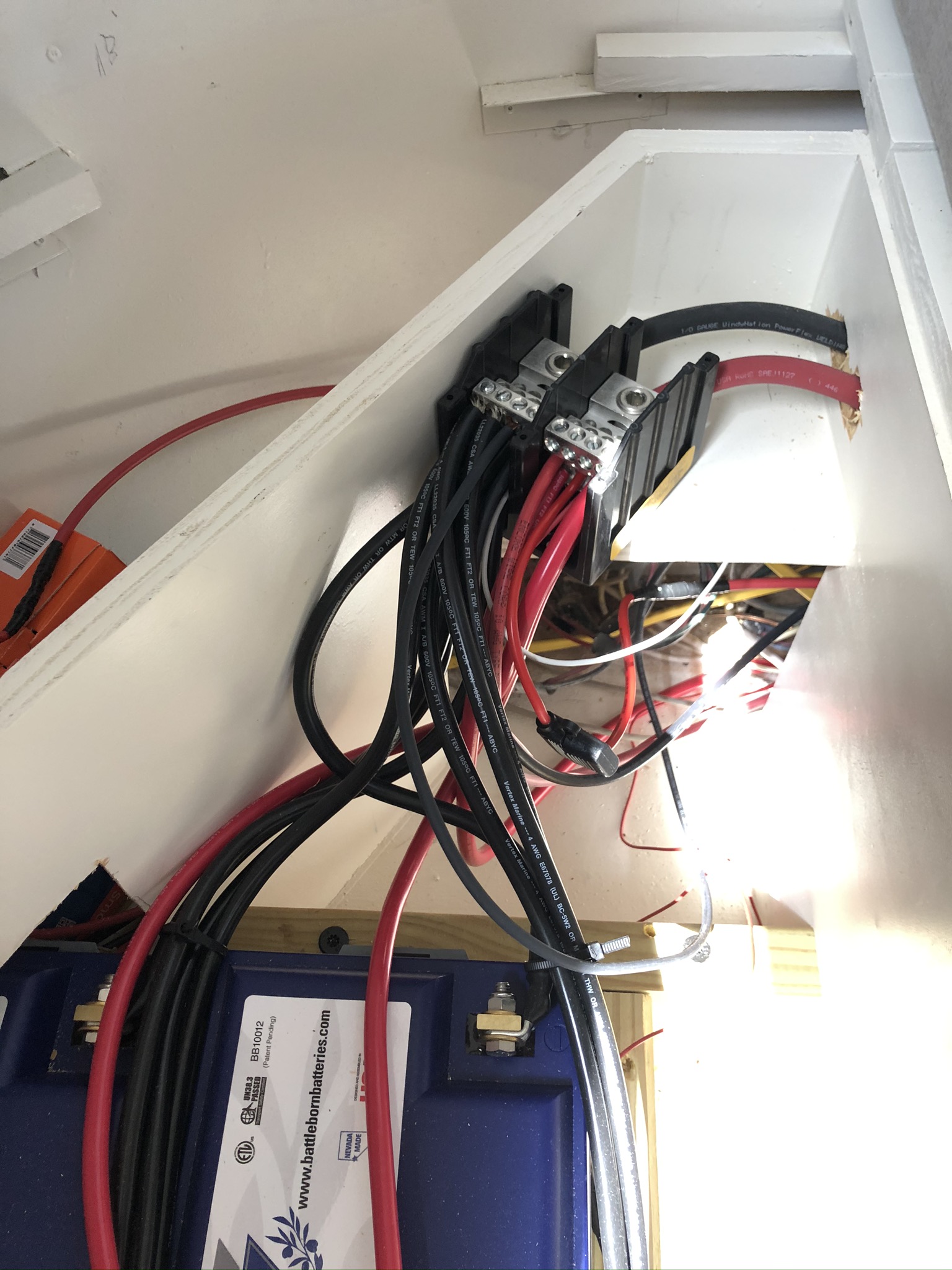"Finished" my solar install 11 days ago and have been frustrated ever since... somehow seem to be generating a lot of power but my batteries do not see it. I checked each of the six panels prior to install, each was within Renogy specs. I then checked the voltage of each of the series legs, again, within spec. I then checked the parallel connection prior to the roof penetration, within spec. The MPPT shows the watts and amps being generated, so everything upstream from the MPPT seems to be working OK. However, for some reason the batteries aren't actually getting charged despite vastly less power being drawn. The fuse between the MPPT and the power distribution block is 50A and in good condition.
This seems like a 'really' simple leg of the overall system and yet I'm not figuring it out somehow. For example, right now I'm using about 150 watts per the BMV-712 and generating 450 watts per the MPPT. According to everything I'm seeing online, I should be seeing a positive wattage on the BMV as well as "infinite" life remaining, and the SOC going up over time. However, that is not the case. It also doesn't matter what stage the MPPT is in, the BMV doesn't 'see' a change whether the MPPT is in BULK, ABSORPTION, or FLOAT.
Any ideas? Thanks in advance.
A bit about my system overall:
2003 Airstream
960W renogy panels, 6 x 160W each hooked up in Series-parallel configuration (two sets of 3 panels in series, then paralleled into the MPPT)
800 Ah BattleBorn batteries, 8 x 100 Ah each
Multiplus 12/3000/120-50 120v VE Bus
Victron SmartSolar Charge Controller (150V 45A Tr)
BMV-712
Go Power! TS-30 30 Amp Automatic Transfer Switch (shore power & battery charge primary, secondary is from the inverter)

